Watlington Station, Not far to go now…. (N.Chadwick/geograph)
I like London.
I’ve studied there, lived there and still go to meetings there. I’ve got one next Thursday for example.
London has, and remains, a very important part of my life story.
As are its railway stations. I soon got used to Liverpool Street station for example as, back in the 1980’s, it was where I started my journey home from college. I remember the journey well. Wimbledon through to Waterloo, take ‘the drain’ to Bank station on the London Underground then just one stop up the Central Line to Liverpool Street and, ultimately home.
Back then, Liverpool Street was a dark and cavernous place built from sweat, sinew and soot. It’s been largely rebuilt since then and is now bright, clean, contemporary-and rather, it has to be said, characterless. It’s also been surpassed, for the most part, as far as services to King’s Lynn are concerned, by London Kings Cross.
The concourse at London Kings Cross station. There are trains here…somewhere.(N Chadwick/geograph)
I’ve lost count of the hours I’ve spent on the above concourse, waiting for the departures board to advise which platform the King’s Lynn train will be departing from. It’s not exactly a regular service-there’s one train an hour usually, leaving at 42 minutes past said hour. And its usually fairly busy, with most passengers set on going as far as Cambridge, the first stop on a journey which is timetabled to take one hour and 49 minutes.
From the seething heart of London to fresh air and big Norfolk skies in under two hours. That’ll do me.
After Cambridge, the train stops at Cambridge North (which is essentially a student hub), Waterbeach, Ely and Littleport before it makes its first Norfolk stop at Downham Market station.
Downham Market station-look out for the flour! (J.Salmon/geograph)
The station at Downham Market has a long history. It was part of the planning drawn up by the Lynn and Ely Railway Act in 1845 with work starting on the line (there were no plans, at this point, to go any further south than Ely) a year later, with all the stations on that new stretch of line opening swiftly afterwards. Downham was then south of Stow station (which closed in 1963) and was, for a while, and until Ely station opened, the end of the line.
One of the landmarks close to Downham Market station are the buildings owned by Heygate’s, who operate a flour mill in the town. This was, with the newly opened railway in mind, opened in 1851 and is still a busy site today, with around fifty staff who contribute to around 90,000 tons of wheat being milled per year. If and when you are next at Downham Market station, you may notice a fine white film over some of the buildings and land that are adjacent to the station, evidence of a still thriving industry deep in the Fens.
Heygate’s Flour Mill by the level crossing at Downham Market station (Andy F/geograph)
The penultimate stop on my ride home is Watlington station, or, as it used to be known, Magdalen Road station.
Watlington Station opened in 1847 as part of that fast growing East Anglian Railway before becoming part of the Great Eastern Railway in 1862. It was renamed Magdalen Road in 1875 and continued to serve its small Fenland community until 1968 when the station closed.
Local pressure, for once, was able to reverse an unpopular decision and the station reopened again in 1975 before, and for me somewhat unaccountably reverting to being known as Watlington in 1989.
The name Magdalen Road always had a certain air of mystery and romance about it. Yes, reverting to the original name made logistical sense. But does the railway network always have to do what it says on the tin?
King’s Lynn station. Big skies ahoy! (John Sutton/geograph)
The final stop on my journey home is King’s Lynn station, home to one of the most agreeable railway station cafes on the planet.
The original station building here was replaced by the distinctive current one in or around 1871/72 and was subsequently extended in 1910, the same year that the Railway Cafe opened, one that is still going to this day. Be warned: old and well worn jokes about ‘British Rail sandwiches’ most definitely do not apply here, they are delicious! The building itself is a listed Grade II building: in terms of scale, it’ll never be another Kings Cross but as far as I am concerned, the sense of home truly being where the heart is will never be surpassed quite like the feeling I get as my train arrives at the station, slows down and stops after its journey from the metropolis.
Home again.

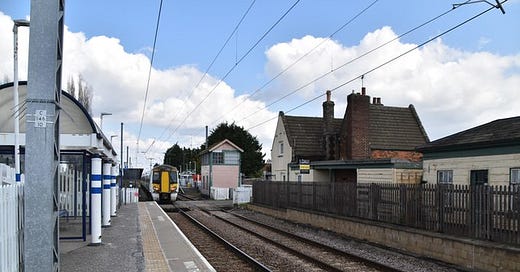



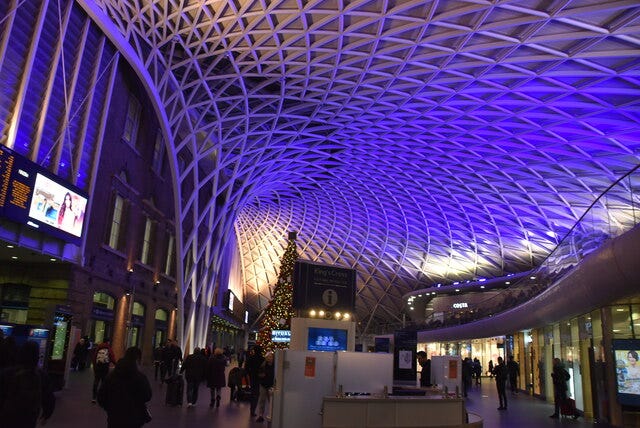
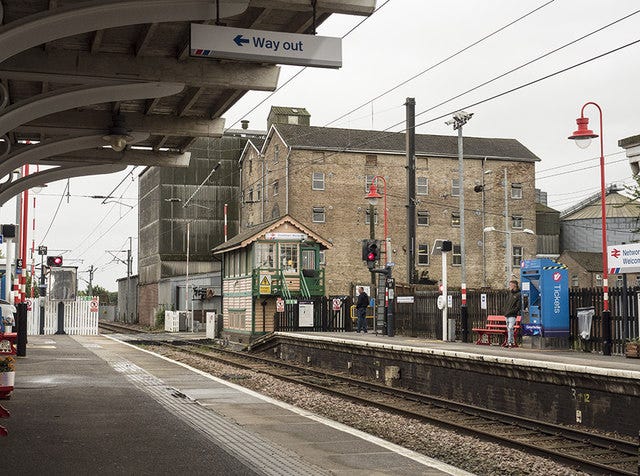
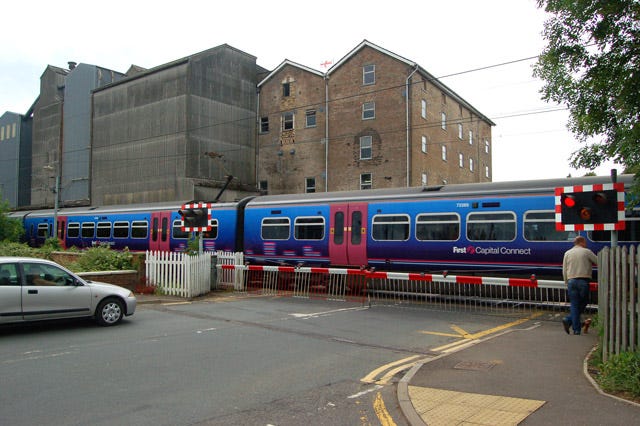
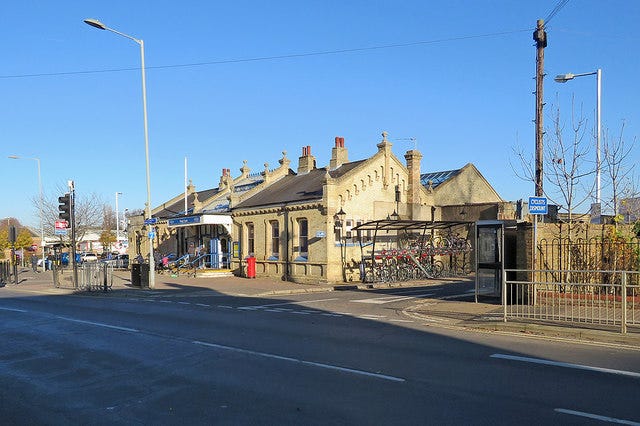
Very evocative! Dying to know what the sandwiches in Kings Lynn are like now! I always loved the feeling of leaving Liv St and heading for big skies. As soon as I got to Manningtree and saw those great swooshes of water I’d start to breathe again x